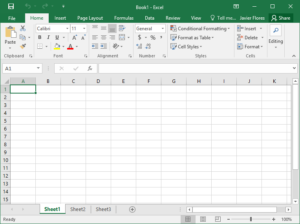10 Call Option Trading Tricks You Should Not Miss Out On…

You have surely heard of your friend or neighbour who bought a call option on SBI ahead of the bank recapitalization announcement and made a mini-fortune. These kinds of stories are just too salivating to miss out on. The risk of buying options is limited to the premium paid and to that extent your losses are limited. But globally more than 95% of the options expire worthless which means the sellers of options make money more often than buyers of options. Are there methods of trading call options consistently in a profitable manner?
While there is no golden rule to trade call options, there are a few tips that can help you out.
Here are 10 such trading tricks for buyers of call options…
Avoid deep out-of-the-money call options
That is quite tempting. When Reliance Industries is quoting at Rs.900, the call option on the Rs.1000 strike may be available at just Rs.1. That does not mean that you should jump into it. In case of deep OTM call options, the premiums are low because the likelihood of making money on such options is low. Ideally, prefer options that are at the money or slightly OTM. Avoid buying deep OTM call options just because premiums are low. That is more because that is what the option is worth!
Be clear whether you are playing for price or for volatility
There are 2 ways that you make money on options. If you bought a Reliance 920 call at Rs.8 and if the spot price of Reliance went up from Rs.900 to Rs.925 then the option also becomes more valuable. The second instance is when the price does not really move much but because of higher volatility, the market expects better returns on call options. As a result, OTM options acquire more time value and become valuable in giving you a profit. When you trade options, you must first be clear why you are buying the call option.
Use options chain to identify underpriced or overpriced options
You can get the option chain of all calls and puts of all strikes for a stock or index either on the NSE website or on your Bloomberg terminal or even on your trading screen. The trading screen also gives you information on whether the particular strike call option is underpriced or overpriced based on the Black Scholes model. If you use that as a guide to buying call options, it is less likely that you will end up buying grossly overpriced options.
Use charts and understand breakeven points
If you want to trade call options successfully, you need to understand the resistances and supports on technical charts. Buying a call option when the stock is holding support levels makes more sense than buying call options when the stock is hitting resistance. When you evaluate the exit price, remember your price is not your break-even point. If you bought a Rs.920 RIL call options at Rs.6 then your break-even is Rs.926. You make profits only after the stock crosses that level.
With call options remember that trend is your friend
Call options are short-term trading tools. Don’t try to adopt a value investment approach by bottom fishing on stocks. That is not to be done with call options. When it comes to buying call options remember that trend is your friend. Always make it a point to trade on the same side as the underlying market trend. Avoid buying call options when the market undertone is bearish.
Take an options risk around key events or announcements
Can you consider option premium as a sunk cost and take a risk on a stock. Don’t do that always. Do it only if you have a strong view around key events like earnings announcements, macro announcements etc. In such events, it is worth taking that kind of risk!
Use shortstop losses and book losses faster
Many traders do wonder why you require to stop losses in call options. After all, when you buy call options your risk is anyway limited to the premium paid. Why lose even the premium if you can salvage part of your cost? If you bought Nifty 10200 call options at Rs.85 and if the trend is working against, as well book loss at Rs.45 rather than waiting for the value to go to 0.
Never leave a call option to expiry
In India, all stock and index options are European in nature. That means such options cannot be exercised before the expiry, unlike American options. Let us say you are holding a Reliance 920 call option on the F&O expiry day which you had purchased at a premium of Rs.21. On the expiry day, the stock is quoting at Rs.965 but the call option is quoting at a discount at Rs.43. Remember, not to leave the option to expire. If you square up the option at Rs.43, you will only pay 0.05% STT on premium value but if you leave to expiry, it will be treated as a stock (being an ITM option) and will be charged STT at 0.125% of actual value. That can make a huge difference so remember to always square your call options on expiry date even if the price is below the intrinsic value.
Avoid trading in illiquid options
You rarely find this problem in Nifty options or in options of highly liquid stocks. However, there are plenty of options on mid-cap shares which can suddenly get illiquid. Sometimes the illiquidity can take the spread to several rupees and that can lead to losses. Illiquid options are best avoided.
Buying index options versus stock options
Finally, there is a very subtle distinction you need to make. When do you buy a stock option and when do you buy index options. If you are positive on private banking, you are better off buying a call option on the Bank Nifty. Similarly, if you are positive on India macros, you can buy call options on the Nifty. But if you see some specific price benefit for SBI, then it makes sense to buy a stock option. Knowing this difference is the key to making money in call options.






